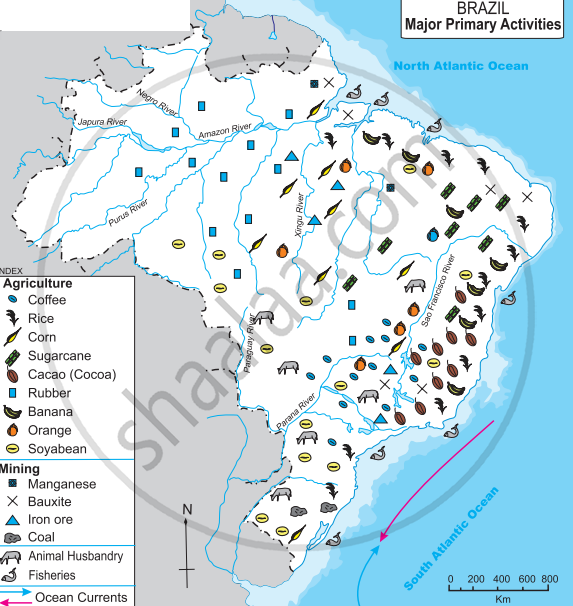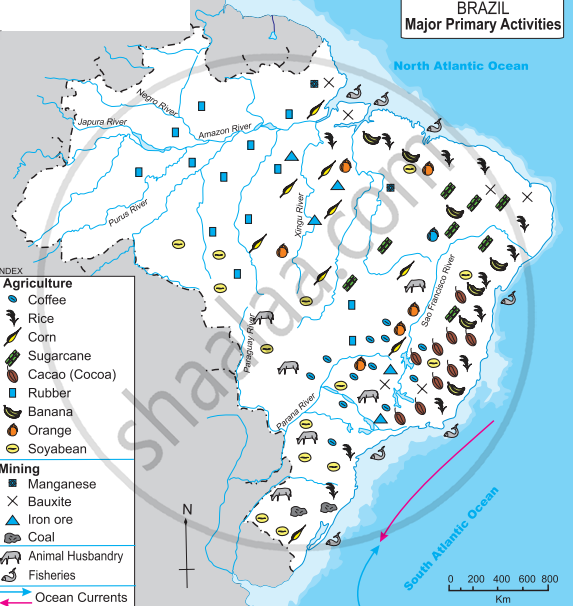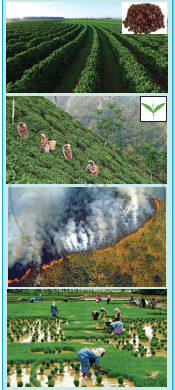Topics
Field Visit
Location and Extent
Physiography and Drainage
- Physical Divisions of India
- The North Indian Mountains
- The Himalayas
- North Indian Plains
- The Peninsular Indian Plateau
- The Indian Coastal Plains
- The Indian Islands
- Physiography of Brazil
- Brazilian Highlands
- The Great Escarpment in Brazil
- Coastline of Brazil
- Brazilian Plains
- Brazilian Island
- Drainage of Brazil
- Drainage Systems of India
- Himalayan Rivers
- Peninsular Rivers
Climate
Natural Vegetation and Wildlife
Population
Human Settlements
Economy and Occupations
Tourism, Transport and Communication
Geography - Physical Divisions of India
Identification of Physical divisions
- Identification of Physical Divisions
Geography - North Indian Mountains
Himalayas
Associated mountains
- Concept of Associated Mountains
Geography - North Indian Plain Region
Deserts
- Desert
Western Plains
- Concept of Western Plains
Central Plains
- Concept on Central Plains
Delta region
- Concept of Delta Region
Eastern Plains
- Concept of Eastern Plains
Geography - Peninsular Plateau Region
Chhotta Nagpur Plateau
- Concept for Chhotta Nagpur Plateau
Malwa Plateau
- Concept on Malwa Plateau
Maharashtra Plateau
- Concept for Maharashtra Plateau
Karnataka Plateau
- Concept for Karnataka Plateau
Telangana Plateau
- Concept for Telangana Plateau
Geography - Western Ghats and Eastern Ghats
Eastern Ghats
- Concept on Eastern Ghats
Sahyadries
- Concept on Sahyadries
Geography - Coastal Region
- Geography - Coastal Region
Eastern coastal plain
- Coastal Region - Eastern Coastal Plain
- Concept for Western Coastal Plain
Western coastal plain
- Concept for Western Coastal Plain
Geography - Indian Islands
- Geography - Indian Islands
Eastern Islands
- Indian Islands - Eastern Islands
Western Islands
- Indian Islands - Western Islands
Geography - Practical 1
Cartography
- Concept on Cartography
Geography - Practical 2
Two dimensional diagrams
- Two Dimensional Shapes
One dimensional diagrams
- Concept on One Dimensional Diagrams
Economics - Introduction of an Economy
Introduction of an Economy
- Economy
- Types of Economy
- Main Features of Economy
Economics - Basic problems of an economy solution
Solutions
- Concept for Capitalism
- Concept for Socialism
- Mixed Economy
Problems
- Introduction of Basic Problems of an Economy
- Problems- for Whom to Produce
- Problem - How Much to Produce
- Problem - by Whom to Produce
Economics - Inflation
Introduction
- Introduction of Inflation
Effects of inflation
- Effects of Inflation
Measures of Inflation
- Measures of Inflation
Causes of inflation
- Causes of Inflation
Economics - Public distribution system and consumer protection
- Measures of Inflation
Public Distribution system - meaning and explanation
- Public Distribution System - Meaning and Explanation
Introduction
- Introduction of Public Distribution System and Consumer Protection
Objectives of Public Distribution system
- Objectives of Public Distribution System
Remedial Measures
- Remedial Measures Public Distribution System and Consumer Protection
Consumer Protection
- Consumer Protection - Rights and Duties of Cunsumer, Food Adulteration
Drawbacks of Public Distribution system
- Drawbacks of Public Distribution System
Progress of Public Distribution system
- Progress of Public Distribution System
- Agriculture
- Mining
- Fishing
Notes
Economic Activities in Brazil
Agriculture
- Agriculture is the primary occupation of people living in Brazil's highlands and coastal areas. A variety of crops can be grown due to the favourable climate and topography.
- Rice and maize are the most important cereal crops. Maize production is primarily concentrated in the central region. Commercial crops such as coffee, cocoa, rubber, soyabean, and sugarcane are grown extensively.
- Brazil is the world's largest exporter of coffee and soyabean. Minas Gerais and Sao Paulo are the two most important coffee-growing states in Brazil.
- Apart from these crops, fruits such as bananas, pineapples, oranges, and other citrus fruits are grown. Cattle, sheep, and goats are also reared in the southern Savannah grasslands. As a result, meat and dairy products are produced abundantly.
Mining
- The eastern region of Brazil is rich in minerals such as iron ore, manganese, nickel, copper, bauxite, tungsten, and diamonds and so on. Inaccessibility, lack of knowledge of potential reserves of resources, dense forests, and other factors have led to limitations in mining in the country's interior. Nonetheless, due to increased demand in the country, mining work has developed well in the highland region.
Fishing
- Brazil has a 7,400-kilometer-long coastline with excellent fishing grounds off the South Atlantic coast.
- The meeting of the warm Brazil current and the cold Falkland current off the coast of south-east Brazil makes it an excellent fishing ground.
- Small groups of individual fishermen have traditionally fished using ancient techniques and equipment. Large vessels, however, are now being used. The most common species caught are swordfish, shrimp, lobsters, and sardines.
- The Amazon River's fish resources are underutilised, and fishing takes place on a small scale.
Example
Which type of occupations gives a boost to the development of a country’s economy?
Economic development occurs when the national income and per capita income of the county rises. The rise in Gross Domestic Product (GDP) is due to the increasing economic activities. But a boost in the national income would be with the improvement of the secondary and tertiary sector. The history of all the developed countries shows that their development is by the improvement of both the secondary and the tertiary sector. The primary sector will contribute to the development of the country only in the initial stages. Only with the transition to the secondary sectors like manufacturing and the service sector the economy can achieve growth. To achieve economic development, the economy would have to provide basic necessities to the people and improve their standard of living.
Example
Look at the map given below. The major primary occupations in Brazil are shown here. Discuss the following points and write your observations in the notebook.
 |
- In which part of Brazil is coffee mainly produced?
- Which food crops are mainly grown in Brazil?
- Can you relate the production of these crops with the climate there?
- Where are the rubber plantations concentrated?
- Complete the table.
Type of crops Crops Areas of production Food crops Cash Crops Fruits and Vegetables
- Coffee is mainly produced in the South and South-east part of Brazil.
-
Rice, soyabean and corn are the food crops mainly produced in Brazil.
- Brazil has a wide range of climatic variation. Rice requires hot and humid climate with heavy rainfall. So it is grown in the coastal region. Corn grows well in the central parts of Brazil, because the climate there is hot and dry.
- The rubber plantations are concentrated in the north western part in the Amazon River Basin area.
-
Type of crops Crops Areas of production Food crops Corn / Maize Central Rice coastal region Cash Crops Coffee South east Sugarcane Central, East Cocoa East Rubber North Soyabean South Fruits and Vegetables Bananas coastal region Oranges East, Central
Example
Observe the figure and answer the following questions.
 |
- Prepare a table of mining products and regions of production in Brazil.
- In which part of Brazil has mining activity not developed? What could be the reasons?
- Considering the availability of resources, were has the development of industries occurred?
-
Mining products Regions of production in Brazil Manganese North, east Bauxite Coastal region Iron-Ore Central, south-east Coal South - Mining has not developed in the western part of Brazil due to inaccessibility, lack of knowledge of potential reserves of resources and dense forests.
- Considering the availability of resources development has occurred mainly in the coastal regions of north-east and south-east of Brazil.
Example
Answer the questions on the basis of given figure
 |
- Can you give two reasons of concentration of fishing near the south-eastern coast of Brazil?
- Inland fishing is not developed in Brazil though there is large number of rivers in Brazil. Can you think of a reason?
- Fishing is done on a large scale near the south-eastern coast of Brazil as it is the region where the warm Brazil current and the cold Falkland current meet making the conditions favourable for it to develop as a good fishing ground.
- The Amazon River Basin is very vast with a dense growth of equatorial forests, making it largely inaccessible. The methods of inland fishing followed are quite traditional and primitive. These are some of the reasons why inland fishing is not developed in Brazil, though there are large number of rivers.
Example
Name the warm and cold ocean currents near Brazilian coasts.
Warm ocean current: Brazil current and Cold ocean current: Falkland current
Related QuestionsVIEW ALL [13]
Look at the map given below. The major primary occupations in Brazil are shown here. Discuss the following points and write your observations in the notebook.
 |
- In which part of Brazil is coffee mainly produced?
- Which food crops are mainly grown in Brazil?
- Can you relate the production of these crops with the climate there?
- Where are the rubber plantations concentrated?
- Complete the table.
Type of crops Crops Areas of production Food crops Cash Crops Fruits and Vegetables
Observe the figure and answer the following questions.
 |
- Prepare a table of mining products and regions of production in Brazil.
- In which part of Brazil has mining activity not developed? What could be the reasons?
- Considering the availability of resources, were has the development of industries occurred?


